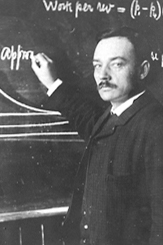[do_widget id=advanced_sidebar_menu-5]
Brent Sleep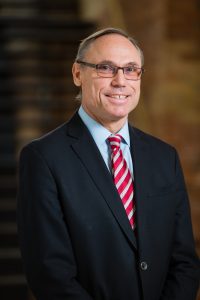 Professor Brent Sleep served as the Associate Chair of Research in the Department of Civil Engineering before being named to Chair in July 2013. He is recognized internationally for his research in remediation of contaminated soil and groundwater. Professor Brent Sleep served as the Associate Chair of Research in the Department of Civil Engineering before being named to Chair in July 2013. He is recognized internationally for his research in remediation of contaminated soil and groundwater.Professor Sleep joined the Department of Civil Engineering in 1990, was promoted to Associate Professor in 1995 and to full Professor in 2000. He is a fellow of the Engineering Institute of Canada and is the lead researcher and Principal Investigator of two research networks: INTEGRATE, the Innovative Technologies for Groundwater Remediation project, is funded by the Ontario Research Fund – Research Excellence (ORF-RE) Water Round grant; and RENEW, the Remediation Education Network, is funded by an NSERC CREATE grant. His research interests are in the area of innovative methods for remediation of soil and groundwater contamination, with a focus on organic contaminants. His research group conducts laboratory and computer modelling studies of bioremediation, thermal remediation, and the applications of chemical oxidants and nanoscale zero valent iron for subsurface remediation. His group is also investigating the transport of pathogens in fractured rock aquifers. Professor Sleep has made outstanding contributions to the profession through editorships in leading journals in the water resources field and active involvement on important panels and committees. He currently serves as Editor-in-Chief of the Journal of Contaminant Hydrology and as an Associate Editor of Advances in Water Resources. He also has a record of outstanding administrative service to the Department and has served as Associate Chair, Research since 2008. More | 2013-present |
Brenda Y McCabe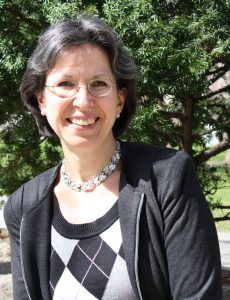 From 2004 to 2006, McCabe served as Associate Chair, Undergraduate Studies in Civil Engineering, making outstanding contributions to strategic planning, undergraduate recruitment, admissions, curriculum, and the student experience. In 2006, she was appointed Vice-Dean of Graduate Studies for Engineering, before being appointed to Chair of the Department of Civil Engineering in 2008. McCabe has served extensively on numerous committees at the professional, university, Faculty and departmental levels. From 2004 to 2006, McCabe served as Associate Chair, Undergraduate Studies in Civil Engineering, making outstanding contributions to strategic planning, undergraduate recruitment, admissions, curriculum, and the student experience. In 2006, she was appointed Vice-Dean of Graduate Studies for Engineering, before being appointed to Chair of the Department of Civil Engineering in 2008. McCabe has served extensively on numerous committees at the professional, university, Faculty and departmental levels.In 1998-1999, she received the Faculty’s Early Career Teaching Award. Her research interests include construction benchmarking, probabilistic reasoning, contractor prequalification, construction procurement, and safety. McCabe received a BASc in Civil Engineering in 1994 from the University of Toronto and a PhD in Construction Engineering & Management in 1997 from the University of Alberta. She joined the University of Toronto’s Department of Civil Engineering in 1997 as Assistant Professor, and became Associate Professor in 2002. McCabe is a PEng, and member of the Canadian and American Societies of Civil Engineers (CSCE and ASCE). More | 2008-2013 |
R Paul Young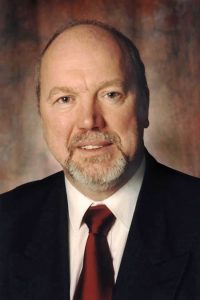 Professor Young is an engineering geophysicist who has focused his research and engineering career on developing seismic methods and instrumentation to monitor fractures and rock quality. Over the past 35 years, he has pioneered techniques used today in monitoring and interpreting induced seismicity in the mining, petroleum and nuclear waste disposal industries. He has published over 250 scientific papers in refereed journals and conference proceedings, supervised over 45 Ph.D. students and postdoctoral research fellows and developed innovative instrumentation systems for induced seismicity/acoustic emission monitoring. He continues to develop innovative geophysical imaging techniques in rock fracture mechanics and investigate the synergy with advanced numerical modeling. Professor Young is an engineering geophysicist who has focused his research and engineering career on developing seismic methods and instrumentation to monitor fractures and rock quality. Over the past 35 years, he has pioneered techniques used today in monitoring and interpreting induced seismicity in the mining, petroleum and nuclear waste disposal industries. He has published over 250 scientific papers in refereed journals and conference proceedings, supervised over 45 Ph.D. students and postdoctoral research fellows and developed innovative instrumentation systems for induced seismicity/acoustic emission monitoring. He continues to develop innovative geophysical imaging techniques in rock fracture mechanics and investigate the synergy with advanced numerical modeling. In the last 20 years, he has served as Vice-President of the University of Toronto, responsible for Research and Innovation (2007- 2014), Chair of the Department of Civil Engineering and Director of the Lassonde Institute for Mining at the University of Toronto. He has been named Fellow of the Royal Society of Canada, received the Willet G. Miller Gold Medal of the Royal Society of Canada for his research in earth sciences, the Queen Elizabeth II Diamond Jubilee Medal for services to scholarship in Canada, and the John A. Franklin Award for Rock Mechanics by the Canadian Geotechnical Society. More | 2004-2007 |
Eric J Miller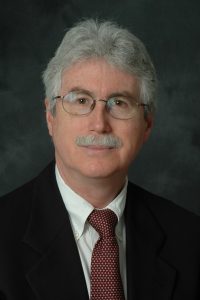 Eric J. Miller is Past Chair of the U.S. Transportation Research Board (TRB) Committee on Travel Behavior and Values, Member Emeritus of the TRB Transportation Demand Forecasting Committee and Past Chair of the International Association for Travel Behaviour Research. He served on the US National Academy of Sciences Committee for Determination of the State of the Practice in Metropolitan Area Travel Forecasting. He has chaired or been a member of numerous travel demand modelling peer review panels throughout North America. He is the recipient of the 2009 Wilbur S. Smith Distinguished Educator Award from the Institute of Transportation Engineers and the inaugural winner of the University of British Columbia Margolese National Design for Living Award (2012). He is the developer of GTAModel, a “best practice” regional travel demand modeling system used by municipalities in the Greater Toronto Area (GTA) to forecast travel demand; TASHA, a state-of-the-art activity-based microsimulation travel demand model; and ILUTE, an integrated land use-transportation model system for the GTA. Eric J. Miller is Past Chair of the U.S. Transportation Research Board (TRB) Committee on Travel Behavior and Values, Member Emeritus of the TRB Transportation Demand Forecasting Committee and Past Chair of the International Association for Travel Behaviour Research. He served on the US National Academy of Sciences Committee for Determination of the State of the Practice in Metropolitan Area Travel Forecasting. He has chaired or been a member of numerous travel demand modelling peer review panels throughout North America. He is the recipient of the 2009 Wilbur S. Smith Distinguished Educator Award from the Institute of Transportation Engineers and the inaugural winner of the University of British Columbia Margolese National Design for Living Award (2012). He is the developer of GTAModel, a “best practice” regional travel demand modeling system used by municipalities in the Greater Toronto Area (GTA) to forecast travel demand; TASHA, a state-of-the-art activity-based microsimulation travel demand model; and ILUTE, an integrated land use-transportation model system for the GTA.More | 1998-1999, 2003, 2007 (Acting) |
1994-1995 (Acting) |
|
1989-1995 |
|
S M Uzumeri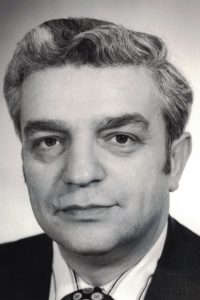 Professor Uzumeri graduated from the University of Toronto with a B.A.Sc. in Civil Engineering in 1956 and completed an M.A.Sc. in 1958. He joined the Department as Lecturer the same year and became an Assistant Professor in 1962. He was promoted to Associate Professor in 1968 and to Professor in 1974. He was Assistant Chair of the Civil Engineering Department from 1968-1971 and Chair from 1984-1989. Professor Uzumeri retired from the University of Toronto in 1993. Following this, he was a faculty member at the Middle Eastern Technical University until 2005. Professor Uzumeri graduated from the University of Toronto with a B.A.Sc. in Civil Engineering in 1956 and completed an M.A.Sc. in 1958. He joined the Department as Lecturer the same year and became an Assistant Professor in 1962. He was promoted to Associate Professor in 1968 and to Professor in 1974. He was Assistant Chair of the Civil Engineering Department from 1968-1971 and Chair from 1984-1989. Professor Uzumeri retired from the University of Toronto in 1993. Following this, he was a faculty member at the Middle Eastern Technical University until 2005. In his 35 years at the University of Toronto, Professor Uzumeri made many contributions as a distinguished professor, administrator and mentor. He was on the University Wide Committee involved in drafting the new University of Toronto Act implemented in 1971. He served as President of the University of Toronto Faculty Association from 1972 to 1973 and President of the Association of Engineering Professors from 1975 to 1978. Professor Uzumeri was a member of Governing Council from 1981 to 1989, serving on several committees of Governing Council and finally serving as Chair of the Academic Board of the University of Toronto from 1988 to 1989. With an absolute conviction that engineers have the ability to make the world a better place, Professor Uzumeri played a significant role in deepening the understanding of reinforced concrete behaviour. He was among the founding members of the Canadian Association for Earthquake Engineering and made significant contributions to earthquake engineering research and building code development, serving on several national and international technical committees dealing with building codes and seismic design. In 2002, he was recognized by the American Concrete Institute with a special Symposium named after him. He was a fellow of the American Concrete Institute and the Canadian Society of Civil Engineering. As Civil Engineering Department Chair, Professor Uzumeri championed the modernization of the Department by introducing computerization to its administration along with the associated staff training, made academic teaching allocations transparent and introduced the concept of funding levels for the Department’s graduate students. He encouraged and supported many students and young faculty members over the years. He was also instrumental in setting up a scholarship, which bore the name of his graduating year, the Class of 5T6 scholarship, awarded annually to an outstanding second year civil engineering student. Source | 1984-1989 |
1974-1984 |
|
Theodore Cameron KenneyProfessor Kenney completed his undergraduate work at McGill University, where he was a starting half back of the football team, and upon receiving the Athlone Fellowship went on to complete a Masters degree at Imperial College, University of London. He returned to Canada to work for H.G. Acres Ltd. in Niagara Falls for four years before moving to Oslo to undertake research in soil mechanics at the Norwegian Geotechnical Institute. His work there formed the basis of his Ph.D., subsequently awarded by the University of London. He chose to return to Canada rather than accept appointments offered by leading universities in the United States. Professor Kenney accepted appointment to the faculty of the Department of Civil Engineering in 1967. For the next 30 years he was actively engaged in geotechnical engineering research and a dedicated and inspiring teacher. He was Chair of Civil Engineering from 1968 to 1974, the first Chair to be selected under new policies for University governance. As Chair, Professor Kenney was instrumental in enriching academic programs, establishing standards of excellence, and transforming the Department into one of the leading research and teaching institutions on the continent. Admired and respected as a consummate professional, he was a fair and dedicated leader who made the interests of students, career advancement for junior faculty, and the wellbeing of the Department his most important priorities. Source | 1968-1974 |
1963-1964 (Acting) |
|
1954-1968 |
|
1953-1954 |
|
1931-1953 |
|
1929-1945 |
|
1920-1929 |
|
1901-1931 |
|
1878-1901 |
